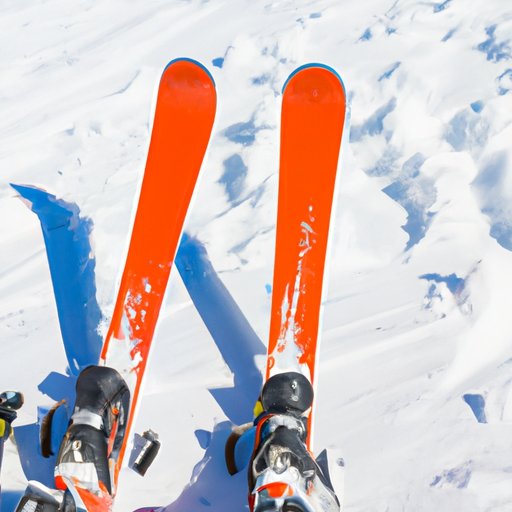I. Introduction
Skiing is a winter sport that involves sliding down snow-covered slopes using specialized gear and equipment. For first-timers, skiing can be intimidating but with the right skills and safety precautions, anyone can enjoy it. This article aims to provide a step-by-step guide for beginners looking to learn how to ski. We’ll also cover common mistakes to avoid, safety protocols, gear and equipment, the benefits of skiing, and tips for selecting ski resorts.
II. Step-by-step instructions
If you’re a first-time skier, you’ll need the right equipment and clothing. Ski equipment includes skis, poles, boots, and bindings. For clothing, make sure you wear waterproof and insulated jackets, pants, gloves, and goggles. Once you have your gear, you’re ready to learn the basic positions, starting with a snowplow. To perform a snowplow, position your skis in a V-shape and push your heels outward to slow down or stop. Turning while skiing involves shifting your weight and edging your skis. Stopping with both skis parallel is done by shifting all of your body weight to the ski edges. Finally, practice makes perfect, so don’t be afraid to keep trying until you master the basics!
III. Common mistakes to avoid
While learning how to ski, there are several common mistakes beginners make. One is leaning back too much, which reduces control and balance. Another is not controlling speed effectively, leading to dangerous situations. Misusing poles or not using them at all, not looking ahead and anticipating obstacles, and not maintaining proper form are all mistakes new skiers often make. Always listen to expert advice and take lessons to avoid these common errors.
IV. Safety first
A significant consideration when skiing is safety. There are always risks associated with the sport, but following proper safety protocols can minimize them. Ski safety gear such as helmets, goggles, and body armor can mitigate the impact of falls and collisions. Additionally, it’s important to obey trail maps, signs, and warnings. Skiing with a buddy is essential in case of an emergency, and knowing what to do in that situation can save a life.
V. Gear and equipment
Skis, boots, and bindings are the key equipment you need to ski. The skis are designed to glide smoothly over the snow and support your weight. Boots should fit snugly and be comfortable enough to support your feet and provide the necessary flexibility and movement. Good bindings will securely attach the boots to the skis, ensuring that they don’t come loose at high speeds. Pole length and design are significant, as they provide stability and help with balance. A helmet, goggles, and appropriate clothing are also necessary for safe skiing.
VI. Benefits of skiing
Aside from being a fun and thrilling sport, skiing offers many great benefits. Physically, skiing is an excellent source of exercise and cardio. It tones the muscles, improves balance, and burns a significant amount of calories. Mentally, skiing clears the mind and reduces stress. It also puts you in touch with the natural environment, which has been shown to boost mood and reduce anxiety. Additionally, skiing can help create lasting memories and build relationships with family and friends.
VII. Where to ski
If you’re ready to hit the slopes, there are many great ski resorts around the world to choose from. Depending on the level of experience you have, you may want to start with beginner-friendly resorts. The best ski resorts offer a wide range of slopes for every level of ability, as well as accommodation, amenities, and activities. Read reviews and research ahead of time to select the best resort for your skill level and preferences.
VIII. Tips for advanced skiers
If you’re an experienced skier looking to refine your skills or take them to the next level, consider seeking expert advice. Go for intermediate-level slopes and challenge yourself with steeper terrain and longer runs. Ski with other advanced skiers to learn from them and try new techniques. Most importantly, keep practicing and pushing yourself further with every run.
IX. Conclusion
Skiing is an exciting and rewarding winter sport that provides many benefits to both mind and body, but it can also pose some risks. By following the step-by-step guide, safety protocols, and tips we’ve shared in this article, however, you can start skiing safely and enjoyably. Whether you’re a beginner or an experienced skier, there’s always room for growth and improvement, so don’t be afraid to take on new challenges and push yourself to new heights.
